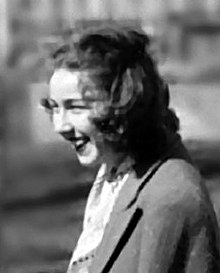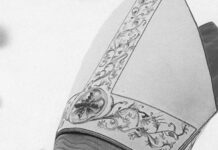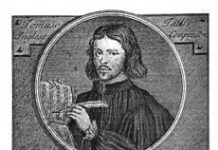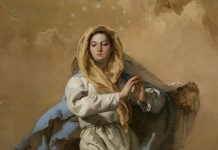Speed, not death, is the great leveller today. Travellers dash around the globe destroying by their visits the very sites and cultures they have come to view. Even for those who do not travel, the mass media homogenize experience and do so with the speed of light. Only the past stands secure from the poking fingers of man’s curiosity, mysterious and impervious to change: “The past is a foreign country: they do things differently there.”[i] Some people, and Flannery O’Connor was one of them, have the ability to view the present as what might be called “the past that is to be.”[ii] As we would be enthralled if we were somehow able to walk down a street of the Montreal of 1750, so they are enthralled to walk down the street they live on now. One day our civilization will be seen for what it is, an exotic florescence of human culture populated with eccentrics whose bizarre behaviour cannot fail to startle and amuse. O’Connor was already diverted by it. In a letter, she described her admittance into hospital:
When I came in & gave the information about myself at the admitting place, the woman, who had carrot-colored hair & eye glasses to match, asked me by whom I was employed, “Self-employed, says I. “What’s your bidnis?” she says. “I’m a writer,” I says. She stopped typing & after a second said, “What?”
“Writer,” I says.
She looked at me for a while then she says, “How do you spell that?”[iii]
Towards the end of her life, she acquired a television set: “TV satisfied a taste for the vulgarities of popular culture, . . . Roy Rogers’s horse, Trigger, attending church in Pasadena.”[iv] In her novels and numerous short stories, Flannery O’Connor equipped her readers with that special lens which reveals the uncanny world that lurks beneath what we have the audacity to call “ordinary: “It is in our own daily life that we are to look for the portents and the prodigies. . . . Every day we are missing a monster whom we might easily love, and an imbecile whom we should certainly admire.”[v] Ruby Hill, for example, in “A Stroke of Good Fortune,” is smug and plump at thirty-four. Yet, like a bizarre Ulysses, her laborious ascent of the staircase to her apartment is an Odyssey into the real world. Mrs. May, too, seems as ordinary as ordinary can be, a widow who wants to keep the farm going. But one morning before sunrise, in “green rubber curlers . . . [and] an egg-white paste that drew the wrinkles out while she slept,” she encountered a lover whose embrace is fatal: “the bull, silvered in the moonlight . . . like some patient god come down to woo her.” In our strange world, O’Connor says, there are prophets of life and of death. God’s messenger in “Revelation” is an acned young woman with the telltale name of Mary Grace who shatters the conventional world of Mrs. Turpin by throwing a book—Human Development—at her. For Sarah (“Parker’s Back”), the prophet is her husband who receives his call at a burning bush and brings Christ to her in the form of a tattoo. And in “The Life You Save May Be Your Own,” Satan comes to an old woman and her retarded daughter in the person of Mr. Shiftlet, a handyman; he is welcomed.
Flannery O’Connor often spoke about her fiction. Sometimes she gave lectures, but equally informative and more interesting are her letters:
[God] has revealed himself in history and continues to do so through the church, and . . . he is present (not just symbolically) in the Eucharist on our altars. To believe all this I don’t take any leap into the absurd. I find it reasonable to believe, even though these beliefs are beyond reason.[vi]
This vivid sacramental theology infuses all her writing but, like Chesterton, in a generalized, symbolic form as she delineates the workings of divine providence. Her presentation of the mystery of God’s care of his creatures is often startling. For her characters—and by implication, also for her readers—violence is sometimes the only way God can smash the walls we build around ourselves. The demolition may be painful, but it is always portrayed with a grim humour and a sense of the ridiculous. Her fantastic characters crowd into the memory: unhappy Joy, alias Hulga, who defends herself with a pair of glasses and a wooden leg, is eventually robbed of both of them; Rufus Johnson, a prophet with a club foot, brings disaster to the home of Shepherd, his social worker; Haze Motes, founder and sole member of the Church without Christ – “‘Protestant?’ she asked suspiciously, ‘or something foreign?’ He said, ‘No, ma’am, it was Protestant.’”—blinds himself. There are no short cuts to God in O’Connor’s world. Only by way of suffering do her characters come to understand that God is the goal they seek. It is a world that Flannery O’Connor knew at first hand. She was stricken at twenty-five with lupus, the disease that had killed her father, and died of it in 1964 when she was thirty-nine.
The imagination of an intelligent person in isolation can become eccentric from not being in contact with equally gifted colleagues. Eric Hoffer, who was the smartest longshoreman in Los Angeles, is a case in point; his popular The True Believer would have been improved if his ideas had been challenged by his intellectual peers before they were put into print.[vii] O’Connor, confined by her illness to Andalusia, avoided this danger by mailing and receiving letters on a grand scale with people who, as often as not, followed up their letters with visiting the farm. One such episode was her interaction with the Dominican Sisters of Hawthorne who ran a home for cancer patients. The upshot was the publication of Memoirs of Mary Ann, for which she wrote an introduction . . . and re-wrote the text. But O’Connor was catholic as well as Catholic, and Gooch’s pages are full of social mavericks. Besides the all-important figures of Robert Giroux, Caroline Gordon, and the Fitzgeralds, we have, e.g., the free-wheeling Maryat Lee and the vacillating Betty Hester. Like Chesterton, O’Connor was able to keep friendships alive with people whose views were radically different from her own. Gooch identifies for his readers the people and events that sparked O’Connor’s imagination. Erik Langkjaer, for instance, a textbook salesman for Harcourt Brace (O’Connor’s publisher), recognized a version of himself in Manley, the fake Bible salesman, who humiliates Hulga in “Good Country People”; and Hulga is to some extent a tongue-in-cheek version of O’Connor herself. Once, on a visit to the Fitzgeralds, O’Connor read Robert’s translation of Oedipus Rex and found in it the ending she needed for Wise Blood.
Religion pervaded Catholic life in those days, with the consequence that the least sophisticated had an interest in theology. O’Connor’s bedtime reading—Introduction to Saint Thomas Aquinas—was not a bizarre peculiarity but a witness to the thoroughly Thomistic character of Catholic thought. What Étienne Gilson and Jacques Maritain effected in their revival of Thomism in the 1930s and 40s was more a rediscovery of the wellspring of Catholic practice and theory than a radical break with what had gone before. Maritain’s Art and Scholasticism was particularly important for O’Connor’s understanding of her work; she underlined, and acted upon, this statement, “Do not make the absurd attempt to sever in yourself the artist and the Christian.”[viii] Despite his research, Gooch can be lacking in sensitivity to that pre-conciliar Catholicism and, occasionally, amusing: “Flannery was every bit as shrill, and apocalyptic, in her damning of Communism, as [Robert] Lowell, the Catholic Church, and even Billy Graham.”[ix] The occasional slip or awkwardness indicates his unfamiliarity with his topic. He calls a thurible “an incense vessel,” for instance, and confuses Confirmation and First Communion. But Flannery is lacking in two other significant ways. He does not sufficiently recognize the consistent quality of O’Connor’s prose, and he does not fully grasp the religious source of that consistency.
Great writers develop early, scribbling away as soon as they can write, and the unique character of their style is unmistakable from the start. As Chesterton noted of Dickens, “To the level of ‘The Pickwick Papers’ it is doubtful if he ever afterwards rose,”[x] and Evelyn Waugh’s biography of Rossetti, his first published work, is also typically poised and polished. Similarly, the artistic universe of these authors is complete from the first. Themes may expand, attitudes may darken, but the prose springs full-blown from the artistic mind. Wise Blood, O’Connor’s first novel (1952), gives as complete an exposition of the world she created as The Violent Bear It Away (1960). In her case, there is an additional reason for the precocious arrival at a mature style and attitude, viz., her faith, which established and, as time went on, confirmed her worldview. It presented her with a full-blown anthropology: man is created for the vision of God, and the only tragedy in life is the loss of this sublime vocation. From the start, the disturbing violence of her stories is always in the service of this datum of revelation, in that physical suffering or mental distress can call the sinner to conversion.
Saint Thérèse, a favourite saint, offers an illuminating parallel. By any standards she would have been a very ignorant girl when she entered Carmel of Lisieux in 1888 at the age of fifteen, and yet she understood the human condition with a depth that has been recognized by her having been proclaimed a Doctor of the Church. Her Christian faith provided insights into the human condition that philosophy admittedly can also achieve, but at the cost of great labour and then only by a rejection of the pervasive secularism that affected the intellegensia then as now. To recognize belief as a shortcut to maturity is not to disparage research and reflection, but only to emphasize their essential purpose: to know things as they are. Thérèse’s profound entry into the mysteries of the faith was the means by which she was able to escape the bourgeois restraints of her time and place.[xi] O’Connor by a similar route escaped the confines imposed by illness and isolation, but she was able to add what was unavailable to Thérèse: wide reading and an ever-expanding circle of friends. In other words, O’Connor followed the double path to reality that John Paul II called the two wings of the soul: faith and reason.[xii] She was thus able to confirm her religious convictions by reflection on her reading, her surroundings, and the popular culture of her day. After the onset of lupus, physical suffering may be added to the list. This consonance of faith and reason, a powerful element of Thomism, is thus witnessed to by the consistency of her literary output; she began with the insights provided by her faith and continued with them strengthened and extended by study and experience.
There is a third way to encounter things as they really are. Besides the will that believes (faith) and the intellect that explores what is believed (theology), there is mysticism, the direct encounter of the creature with the Creator. But can we discern a bona fide mystic in this wise-cracking, down-to-earth Southerner, with her suspicion of intellectuals? The answer is “yes” if we admit that mysticism is more widespread than the esoteric connotations of the term would allow. The two-spirit anthropology of early Christianity, for example, implied that everyone was in continual contact with the transcendent world, for good or ill: “‘Hear now,’ said he, ‘concerning faith. There are two angels with man, one of righteousness and one of wickedness.’”[xiii] It follows that mysticism of some sort will be available to any baptized person. O’Connor’s faith, purified in the fire of physical suffering and witnessed to in her disconcerting stories, makes the title “mystic” not altogether inappropriate. Her uncanny insights into the nature of good and evil would therefore have been as much the product of her prayer as of her imagination. Consider this passage from “A View of the Woods”:
The third time he got up to look at the woods, . . . and the gaunt trunks appeared to be raised in a pool of red light that gushed from the almost hidden sun setting behind them. . . . He saw it, in his hallucination, as if someone were wounded behind the woods and the trees were bathed in blood.[xiv]
As a child, O’Connor had a moment of fame in demonstrating for a newsreel that one of her chickens could walk backwards. Gooch uses the incident to open and close his book, finding in the maverick fowl a point of entry into O’Connor’s person and her artistic achievement. Although she had some familiarity with the thought of John Henry Newman, she doesn’t seem to have known his sermon “The State of Innocence.” Nevertheless, it provides a nice recapitulation of her view of the human condition as it was captured in her fiction and experienced in her life: “We walk to heaven backwards.”
We advance to the truth by experience of error; we succeed through failures. We know not how to do right except by having done wrong. . . . We grope about by touch, not by sight, and so by a miserable experience exhaust the possible modes of acting till nought is left, but truth, remaining. Such is the process by which we succeed; we walk to heaven backward.[xv]
[i] L. Hartley, The Go-Between (London: Hamish Hamilton, 1953), 9.
[ii] In 1940 she wrote a piece for her high-school paper entitled, “Recollections of my Future Childhood,” Gooch, 73.
[iii] The Habit of Being: Letters of Flannery O’Connor, edited by Sally Fitzgerald (New York: Farrar, Straus and Giroux, 1979), 423.
[iv] Gooch, 357.
[v] G.K. Chesterton, Charles Dickens, The Collected Works of G.K. Chesterton, vol. XV (San Francisco: Ignatius, 1989),188. Cf. his poem Evensong: “Here dies another day/During which I have had eyes, ears, hands/And the great world around me;/And tomorrow begins another./Why am I allowed two?”, reproduced in Masie Ward, Gilbert Keith Chesterton (London: Sheed & Ward, 1943), 62.
[vi] Habit of Being, 479.
[vii] Cf. Balzac’s comment on Marie-Louise-Anaïs de Nègrepelisse: “. . . elle eut le malheur de ne rencontrer aucun point de comparison qui l’aidât à se juger. Le manque de compagnie est un des plus grand inconvénients de la vie de campagne.” Honoré de Balzac, Illusions perdues (Montréal: Phidal, 1995), 39.
[viii] Gooch, 156; cf. Sally Fitzgerald, “Introduction,” Habit of Being, xvii.
[ix] Gooch, 176.
[x] Chesterton, Charles Dickens, 83.
[xi] This point is well established by Ida Friederike Görres, The Hidden Face: A Study of St. Thérèse of Lisieux, translated by Richard and Clare Wilson (New York: Pantheon, 1959).
[xii] John Paul II, Fides et ratio, “Introduction”: “Faith and reason are like two wings on which the human spirit rises to the contemplation of truth.”
[xiii] The Shepherd of Hermas, “Mandate 6.2.1. Evidence of this two-spirit anthropology can be found in the New Testament, especially in the centrality of exorcisms in the career of Jesus and his disciples. His rejection of Satan in the desert shows that he was completely in harmony with the Holy Spirit, and the Christian life may be described as the grace by which the two spirits in man are replaced by the Spirit of Jesus: “God has sent the Spirit of his Son into our hearts, crying, ‘Abba! Father!’” (Gal 4.6).
[xiv] Flannery O’Connor, “A View of the Woods,” Everything that Rises Must Converge (New York: Farrar, Straus and Giroux, 1956), 71.
[xv] John Henry Newman, “The State of Innocence,” Parochial and Plain Sermons (San Francisco: Ignatius, 1997), 1027.











